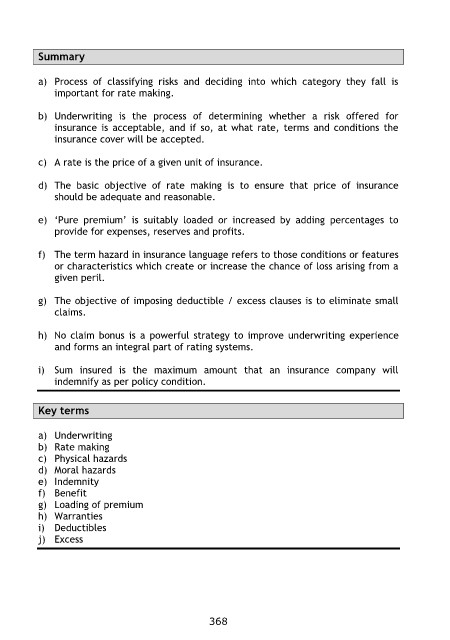Page 374 - IC38 GENERAL INSURANCE
P. 374
Summary
a) Process of classifying risks and deciding into which category they fall is
important for rate making.
b) Underwriting is the process of determining whether a risk offered for
insurance is acceptable, and if so, at what rate, terms and conditions the
insurance cover will be accepted.
c) A rate is the price of a given unit of insurance.
d) The basic objective of rate making is to ensure that price of insurance
should be adequate and reasonable.
e) „Pure premium‟ is suitably loaded or increased by adding percentages to
provide for expenses, reserves and profits.
f) The term hazard in insurance language refers to those conditions or features
or characteristics which create or increase the chance of loss arising from a
given peril.
g) The objective of imposing deductible / excess clauses is to eliminate small
claims.
h) No claim bonus is a powerful strategy to improve underwriting experience
and forms an integral part of rating systems.
i) Sum insured is the maximum amount that an insurance company will
indemnify as per policy condition.
Key terms
a) Underwriting
b) Rate making
c) Physical hazards
d) Moral hazards
e) Indemnity
f) Benefit
g) Loading of premium
h) Warranties
i) Deductibles
j) Excess
368

